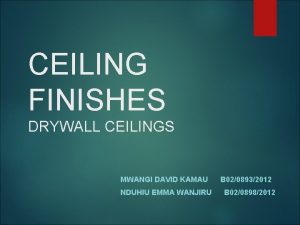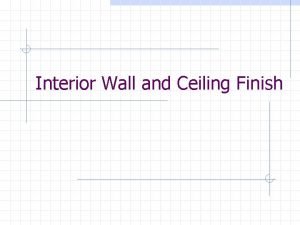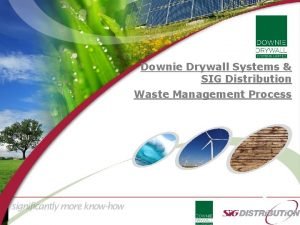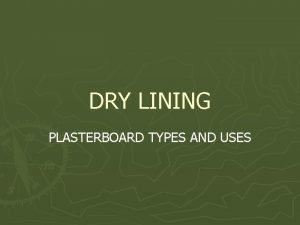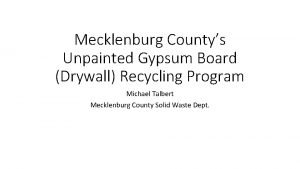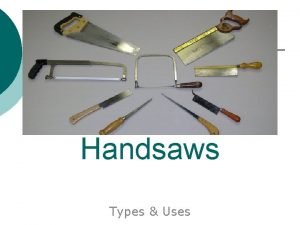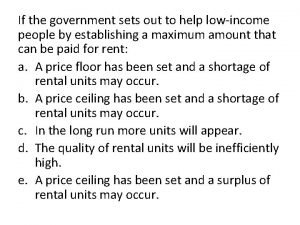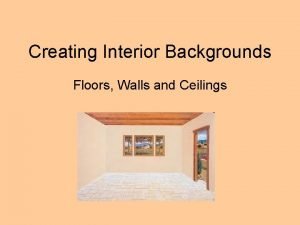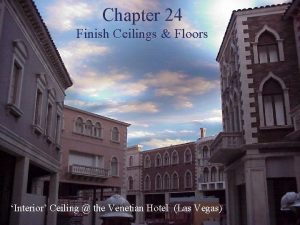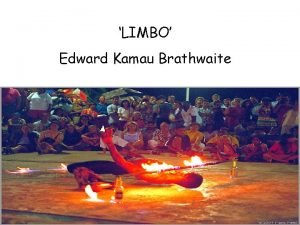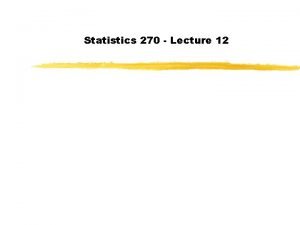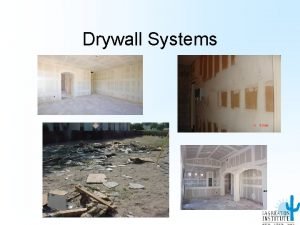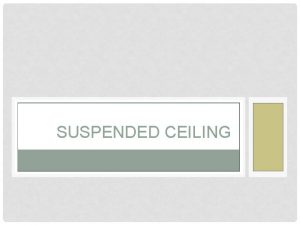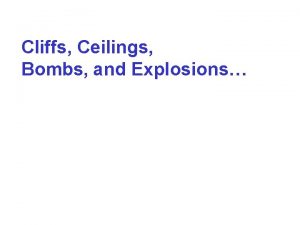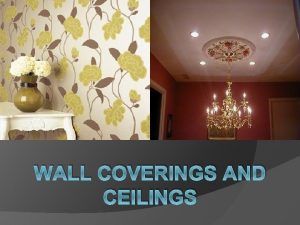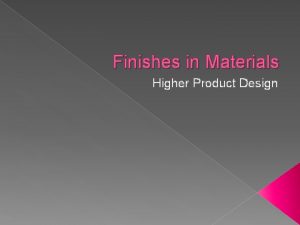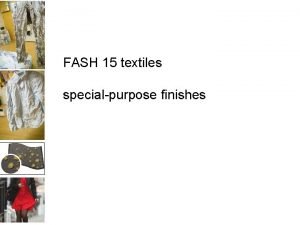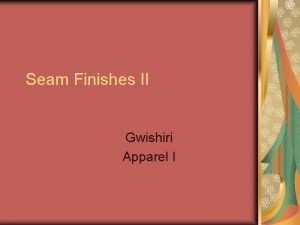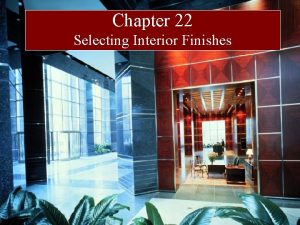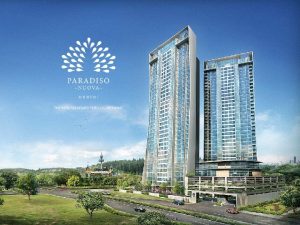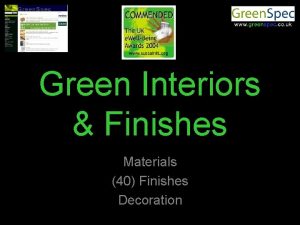CEILING FINISHES DRYWALL CEILINGS MWANGI DAVID KAMAU NDUHIU














- Slides: 14

CEILING FINISHES DRYWALL CEILINGS MWANGI DAVID KAMAU NDUHIU EMMA WANJIRU B 02/0893/2012 B 02/0898/2012

Drywall is a panel made of gypsum plaster pressed between two thick sheets of paper. It’s quick, easy to use and cheap to install.

DRYWALL SIZES The standard and most common size is 8 feet by 4 feet. Thickness – half inch or 5/8 inch panels to prevent the ceiling from sagging Mainly imported from China

DRYWALL TEXTURE FINISHES There are two types: Spray only - Acoustic drywall Orange peel drywall Knockdown drywall Hand applied - Mud swirl Brush textures Skim coating

Acoustic drywall texture the specially made popcorn texture must be mixed into mud or joint compound applied via a special machine equipped with an air hose. Glitter or other decorations may be added to the mixture for special effects. Easy to remove. Simply spray the area with water and scrape it with a knife.

Orange peel drywall achieved by spraying on joint compound that has been thinned. created by using taping mud that is thinned out and sprayed on the ceiling. the look will be different according to the size of the nozzle on the sprayer you are using as well as how far away from the wall you stand. This texture needs to be painted after it is applied.

Knockdown drywall The orange peel effect is knocked down by the use of a drywall knife - a wider one - on the compound that has begun to dry somewhat is what flattens the drywall. This creates a kind of bumpy drywall texture when it is complete and often has unique patterns that are a part of the ceiling. This texture will need to be painted after it is applied. Costly and time consuming due to priming and painting.

Mud swirl Firstly sand the ceiling paying attention to the perimeters Apply mud to the ceiling then immediately create swirls with a swirling brush before it dries up Perform in rows with the second row overlapping the first and the third overlapping the second until the whole ceiling is complete.

Brush textures are very popular, they look good and are easy to do. the use of a drywall texture brush. This brush can be used for simple fast textures to unusual and unique texture that are eye catching.

Skim coating used in areas with high humidity, bathrooms and kitchens, or when homeowners want to put wallpaper on the ceiling. flat surface to even imperfections so that hanging wallpaper will be easier or to provide a surface that is easy to clean. consists of a very thin coating of all-purpose drywall mud applied with a 10 - or 12 -inch trowel.

ADVANTAGES Inexpensive – labor costs for installation Fire-resistant Easy to install Less vulnerable to cracking than plaster Asbestos free Noise-proof

DISADVANTAGES Can be damaged by settling of the building or home-owner accidents Susceptible to water damage - prevented by covalent waterproofing Mold problems and termite

SUSTAINABILITY Drywall is the third producer of green house gases among building materials after steel and cement. The production generates a lot of carbon dioxide, it leaves a lot of gypsum mines which damage the environment and the energy used to fire the kilns in which it’s produced is immense.

INNOVATION An alternative more sustainable material that has been developed to replace gypsum boards is Eco. Rock. made of fly ash, slag, kiln dust and fillers 85% industrial by-products. fully recyclable not susceptible to mold and termites like traditional drywall 80% less energy in production.
 Standard ceiling drywall thickness
Standard ceiling drywall thickness Ceiling finishes definition
Ceiling finishes definition Michuki mwangi
Michuki mwangi Sig distribution cardiff
Sig distribution cardiff Dot and dab drywall
Dot and dab drywall Drywall
Drywall Cross cut vs rip saw
Cross cut vs rip saw If the government sets out to help low income
If the government sets out to help low income When price ceilings are in effect
When price ceilings are in effect Interior backgrounds
Interior backgrounds Ceilings of care
Ceilings of care Tightly attached ceiling
Tightly attached ceiling Wings of dove by edward kamau brathwaite
Wings of dove by edward kamau brathwaite Edward kamau brathwaite limbo
Edward kamau brathwaite limbo A college professor never finishes his lecture
A college professor never finishes his lecture
